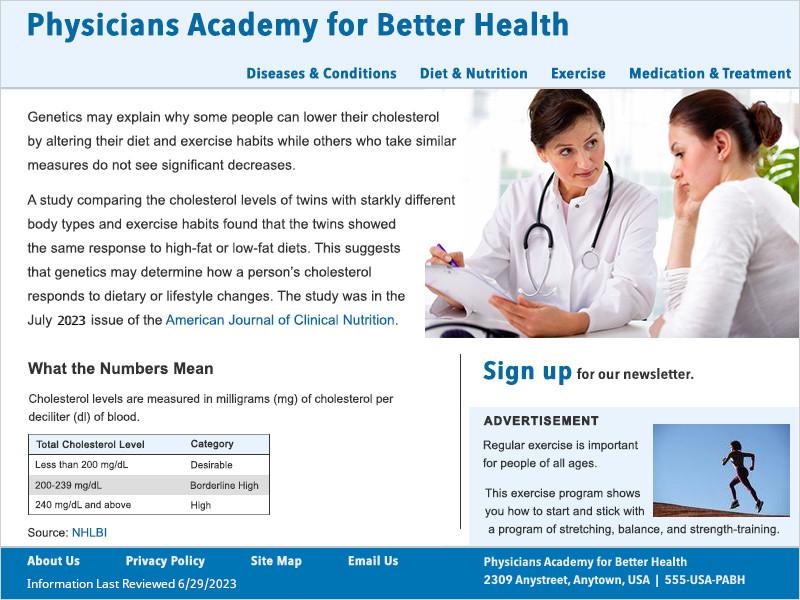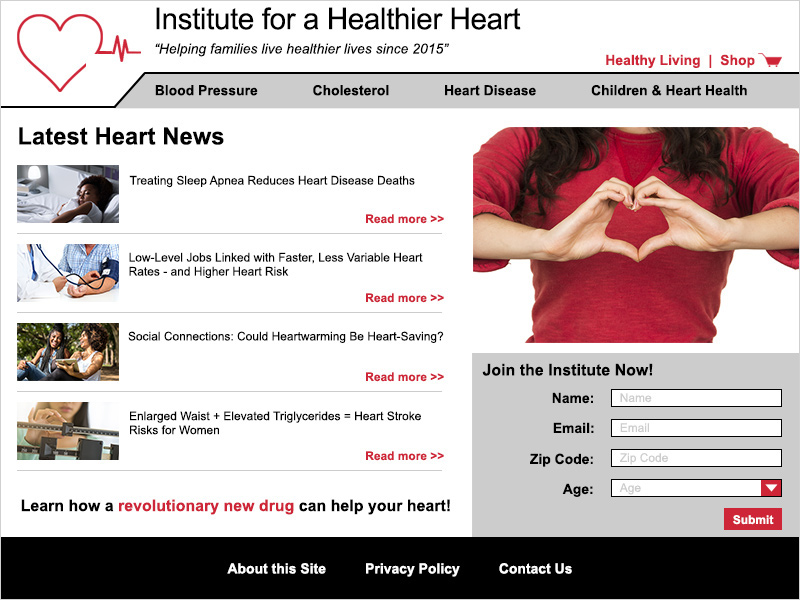Evaluating Internet Health Information Tutorial
The Internet provides you with quick access to health information. But you need to be able to tell the difference between the good sites and the bad.
Let's review the clues to quality by looking at our two fictional websites.
The site for the Physicians Academy for Better Health:
- Is managed by health care experts
- Has a clearly stated purpose to educate the public on disease prevention and healthy living
- Labels advertising
- Reviews health information before posting it
- Explains the sources of data and research
- Is up to date
- Will not share personal information

The site for the Institute for a Healthier Heart:
- Does not tell you who is managing it
- May have information that favors its sponsor
- Has an unclear purpose, but appears to be about selling products that claim to help your heart
- Does not label advertising
- Does not describe how information is chosen
- Does not identify the sources of information
- Does not tell how old the information is
- May include misinformation
- Might share your personal information with others

Which website will you trust?




